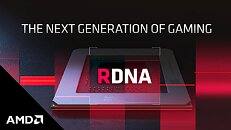
Intel Arc A580 GPU Reportedly Appears in GFXBench Database
The Intel Arc A580 GPU was revealed alongside its Alchemist siblings—A380 A750 and A770—last year, but remains the only one out of that lineup to not have reached the retail market. Things have been quiet on the Intel Arc 5-series "Advanced Gaming" front for a while now—TechPowerUp's GPU-Z utility was updated with support for the A580 last September, and an evaluation sample was benched in Ashes of the Singularity a month prior to that. A supposed sample Intel Arc A580 was recently tested via a Vulkan-based renderer in GFXBench 5.0, perhaps not the best platform to gauge PC performance on.
Has an owner of a rare curiosity unit chosen to bench the unreleased GPU, or is a manufacturer evaluating a sample with a very delayed product launch in mind? The test results are not all that impressive, with the A580 performing poorly compared to the range-topping Arc A770 (placed in Intel's "high performance gaming" tier), although it does much better than the A380 (not a big boast). The likely prototype nature of the evaluated card or immature state of drivers could be to blame for shortcomings in GFXBench 5.0.
Has an owner of a rare curiosity unit chosen to bench the unreleased GPU, or is a manufacturer evaluating a sample with a very delayed product launch in mind? The test results are not all that impressive, with the A580 performing poorly compared to the range-topping Arc A770 (placed in Intel's "high performance gaming" tier), although it does much better than the A380 (not a big boast). The likely prototype nature of the evaluated card or immature state of drivers could be to blame for shortcomings in GFXBench 5.0.





















